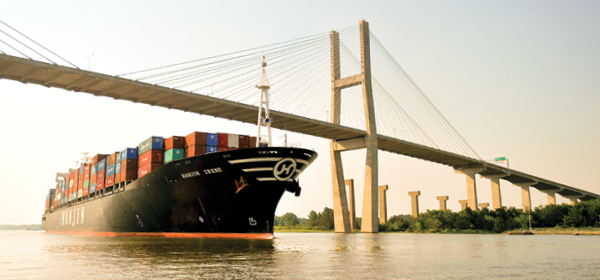Articles
Sponsored


Quantifying Transportation Performance With Technology Tools
Q: What strategic direction have shippers and carriers developed to increase partnership value? A: Shippers and carriers have become more collaborative in their approach to pricing. For example, in the less-than-truckload market, shippers have begun to use carriers’ rate base when running their bids. This creates value for shippers by using each carrier where it […]
Read More
Managing Shipment Data to Meet Customs Requirements
Q: How are Customs agencies changing their approach to reviewing transactional data, and how will this affect shipments and traders? A: Collaborative Border Management (CBM) between Customs agencies will allow countries to exchange trader and shipment data in a live environment so non-compliance and perceived threats can be readily identified, measured, and monitored. Customs is […]
Read More
Alaska: Logistics at the Global Crossroads
Shipments moving to, from, and through Alaska connect the state’s businesses and residents to the rest of the world.
Read More
Building an Effective Import Compliance Program
Q: How do shippers create an importing program? A: Meeting import control obligations need not be a painful experience. Proactive import compliance planning and governance will minimize the risks and negative consequences of non-compliance. First, understand current import laws and regulations. Familiarize yourself with government policies and procedures prior to actually importing your goods. You […]
Read More
Best Practices to Manage International Freight Spend
Many companies have switched operations to low cost suppliers—only to find that higher than expected transportation expenses outweighed the benefits. In fact, the logistics costs associated with operating a global supply chain can be 6 to 11 percent of revenue, roughly three to five times more than a domestic supply network. A recent AberdeenGroup report, […]
Read More
How Freight Classification Changes Impact Shippers
Q: What are some of the recent and proposed changes to the National Motor Freight Classification (NMFC) used to determine the class for rating less-than-truckload (LTL) shipments? A: The most notable change—effective Dec. 1, 2012—was in classifying computer equipment. Under the new classification, this product type moved to a density-based rating with the lowest possible […]
Read More
Georgia: Logistics Front and Center
A prime geographic location positions businesses in Georgia to take the lead.
Read More
e-Commerce: Finding the Sweet Spot
Online retailers seeking new DC and warehouse sites need transportation infrastructure and other resources to support a constant, rapid-fire flow of shipments.
Read More
Connectivity-Visibility-Optimization: Three Keys To a Successful Supply Chain Trading Partner Network
2013 has been called the Year of the Network by numerous supply chain and transportation industry thought leaders. A well-oiled trading partner network allows one-to-many and many-to-many partners to collaborate and communicate using a single source of truth garnered from real-time information. Harnessing this collective power provides a competitive advantage as well as the flexibility […]
Read More